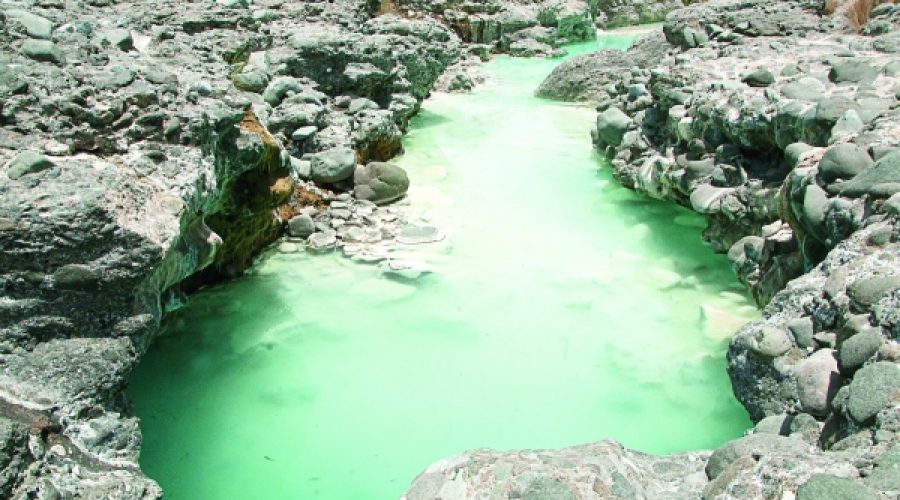Al Damtha: Unlocking Investment Opportunities Where Turquoise Waters Meet Unique Geological Formations in Oman
When water interacts with geological formations, several natural processes take place. Groundwater forms as rainwater seeps through rock and soil, eventually reaching aquifers. This groundwater can then percolate through rock layers, accumulating in specific areas or reacting with minerals in the rocks, causing chemical changes in the geological formations.
The striking turquoise waters often seen in valleys are primarily the result of water interacting with rocks containing minerals such as calcite or sulfur. Additionally, tectonic movements and erosion contribute to shaping valleys and feeding the springs within them, creating this distinctive natural phenomenon, according to an Omani geologist interviewed by the Observer.
In the Eastern Hajar Mountains, sulfur springs are a remarkable sight. Their waters flow between rocks, forming an extraordinary, almost artistic display with surreal turquoise-blue hues. One notable example is the Al Damtha sulfur spring, a popular tourist destination nestled in the mountainous region of Al Rustaq. This spring’s water flows continuously, maintaining its vivid turquoise color year-round, unaffected by seasonal changes. The temperature of the water is warm in winter and moderate in summer.
Addressing the unique color of the water, the geologist explains, “When the spring water emerges, it interacts with the rocks, which secrete a white substance on their surface. This substance is sulfur, which imparts the blue coloration to the water.”
The site’s allure extends beyond its turquoise waters. Visitors can observe remarkable geological formations shaped by natural erosion caused by water flowing along mountain paths. These erosive processes have exposed distinctive formations along the route linking the spring to the valley.
These rocky environments also play an important role in storing water, which can feed groundwater wells and serve as channels (aflaj) to transport water over long distances. Thus, the natural formations contribute significantly to the water supply for the agricultural oases surrounding this unique area.
In Oman, sulfur springs are highly valued for their therapeutic properties, particularly for external use through bathing. They are believed to help treat musculoskeletal, rheumatic, and skin diseases. Sulfur itself is a vital element, containing protein essential for the outer layer of human skin, contributing to collagen formation, and playing a role in the production of certain amino acids. It is also involved in insulin formation and has benefits for treating arthritis.
Oman is home to numerous sulfur springs, including Ain Namah in Wilayat of Adam, Ain Sahban in Wilayat of Suhar, Ain Batt in Wilayat of Ibri, and Ain Hen in Wilayat of Bidbid.
Tourism in Al Damtha village is not limited to enjoying its turquoise waters. Visitors can also explore historical monuments located near the agricultural oases surrounding the spring. Access to the site is straightforward and does not require a four-wheel-drive vehicle.
TEXT & PHOTOS BY YAHYA AL SALMANI
Special Analysis by Omanet | Navigate Oman’s Market
The unique turquoise sulfur springs in Oman represent a strategic opportunity for eco-tourism and health tourism sectors, leveraging their natural therapeutic properties and scenic appeal. Businesses should consider investing in sustainable infrastructure and wellness-focused services to capitalize on the growing demand for natural remedies and cultural experiences. Smart investors and entrepreneurs must also factor in preserving the natural and archaeological heritage to ensure long-term attractiveness and resilience against environmental degradation.



